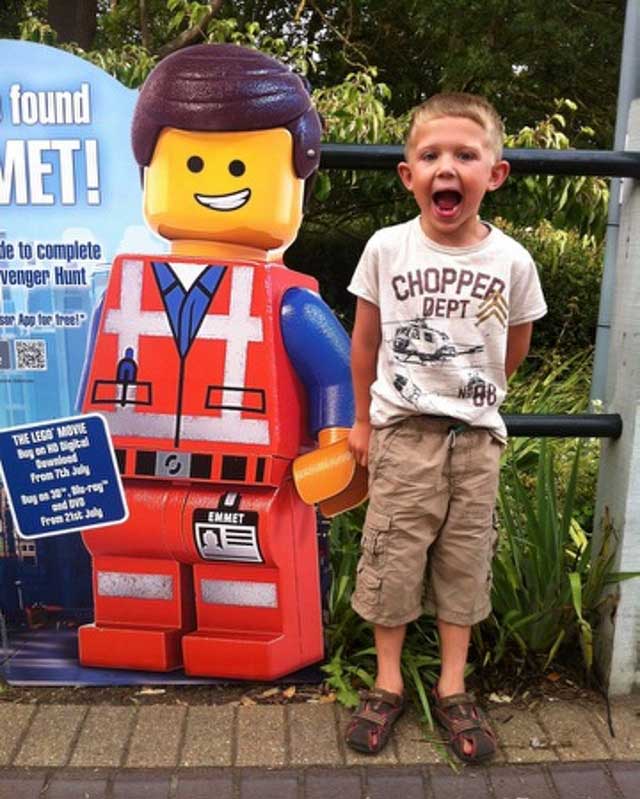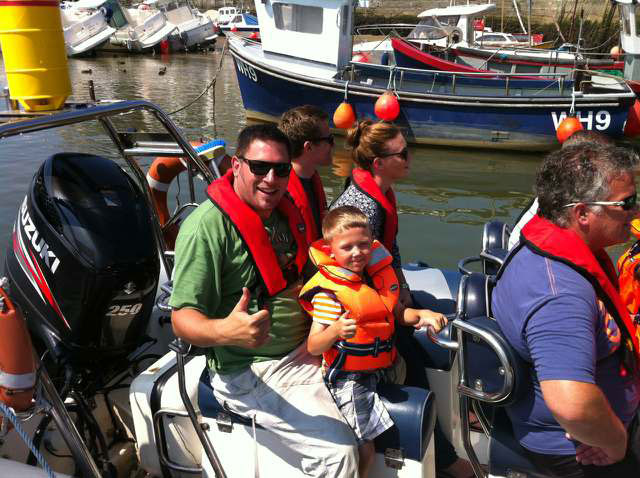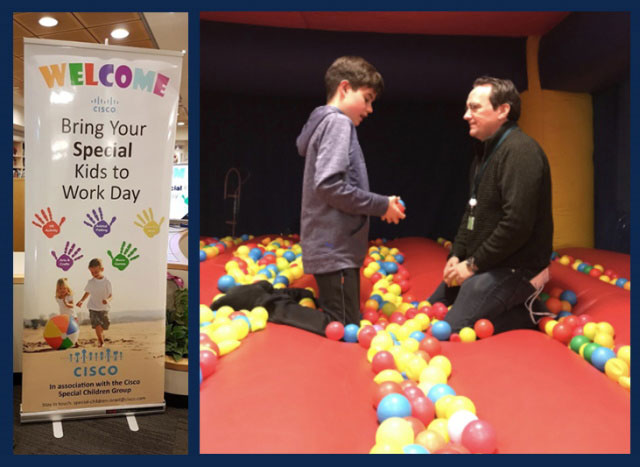2021-June-17
Did you know? You can share this story using the social media icons on the upper left. Use the hashtag #WeAreCisco. You can also rate or comment on the story below.
Living with Autism Spectrum Disorder
BY LINDA SERGIDES · EXECUTIVE ASSISTANT · UNITED KINGDOM
WITH HELEN GALL

Although we didn’t know it at the time, our autism spectrum disorder (ASD) journey started when my son George was three and we enrolled him in nursery at our local school.
George had met all his developmental milestones apart from his speech, however we were told repeatedly that boys are often slower with development in this area, and not to worry. He would catch up!
This wasn’t the case. The gap between George’s speech development and his peers grew wider. We took advice from our doctor who tested George’s hearing and his cognitive understanding of the spoken word. We were referred for speech and occupational therapy, as it was observed that George walked on his toes.
At this stage George had a vocabulary of approximately 50-60 words, but he couldn’t string them into a sentence.
We then started to notice more behaviours, such as being uncomfortable with labels and tags in clothing. He also found wearing socks very uncomfortable — bamboo socks are his go to now — and he found loud noise, especially hand dryers in washrooms, to be very difficult.
During birthday parties, when it was time to sing happy birthday, George would go under the table. He also found it difficult being in crowded environments or having to queue, all of which we now understand to be sensory and anxiety issues.
He wanted to be outside all the time — in all weather — and he hated wearing a coat because he felt restricted and too hot. At school, he wanted to be climbing, running around, or generally being busy outside. He had high energy.
We later discovered that George found being inside difficult to manage due to sensory overload. It was noisy, too warm, and the activities they were doing — painting, drawing, sticking, and cutting out — all used the small motor skills he struggled with.
At this point, we began to hear the term ASD. We looked up the different characteristics and thought this couldn’t be George. He made eye contact, he was sociable, very cuddly, and played using his imagination. So, we didn’t see the connection and put ASD to the back of our minds.
Over the next four years, our understanding of ASD grew, and we began to understand that ASD presents a cocktail of challenges and symptoms — some mild and some more severe.
There is a reason it’s called a spectrum. No two people have the same cocktail just as no two people are the same, which is why such a wide range of symptoms and many combinations exist.
George’s development continued to be closely monitored, with additional interventions both at school and privately. We enrolled in ASD courses and parent workshops to better understand ASD and the behaviours and challenges.

It was a very emotionally draining experience at times, and I’m extremely grateful to my manager, Tania Day, for her support and understanding during this time. I was given flexibility to attend the workshops and the many hospital and development assessments George had to attend from 2015 to 2016. All of which helped to form his diagnosis.
George’s full diagnosis is ASD, extreme anxiety, Developmental Language Disorder, which is a type of speech, language, and communication need that affects the way that children understand and use language, and Dyslexia.
On top of all this George is fun loving and extremely caring, has a great sense of humour, loves outdoor activities, paddle boarding, Go Ape (a high rope outdoor activity), and has the outstanding ability to remember facts and details on his favourite subjects.
When we received the diagnosis, it didn’t change anything for us. George was still the same George. But what it did do, was change the world for George. It meant he would receive the additional support he required for his education.
Today I’m very pleased to say George attends a specialist Speech and Language School and is making wonderful progress. He has also had the support to learn coping strategies on how to manage the world around him, which not only benefits him now, they will help him in all aspects later life.
Although Cisco couldn’t help with the diagnostic journey, the wrap around support they offered, such as the Employee Assistance Program and Babylon healthcare, has been extremely impactful for us as a family.
In addition to George’s diagnoses, he also has some medical issues, including a heart murmur and he was allergic to chlorine during his first 12-18 months (thankfully he grew out of this). This is where we have been able to take advantage of our medical insurance provided by Cisco which has enabled us to fast track appointments to see a consultant.
During the school holidays George found regular holiday clubs impossible. We tried a couple of options but, unfortunately, it just didn’t work out, and caused George a lot of anxiety. This meant I needed to take additional PTO to cover the school holidays — without the PTO purchase programme this would have been impossible.

George has always managed to cope extremely well at Cisco’s general Bring Your Kids to Work days. And pre-COVID-19, Cisco’s Special Children's Network organised Bring Your Special Kids to Work Day events in RTP, San Jose, London, Jerusalem, and Bangalore.
These days are designed to provide a safe, personalised, accommodating experience for a limited number of children with special needs or with special circumstances, where nothing is rushed, there are no long lines, and no loud music.
Awareness of additional needs during the last five years has hugely improved. We have noticed a difference in the understanding and education of ASD and other hidden disabilities. There are more programmes on TV that incorporate ASD characters in their storylines and more celebrities, like Anthony Hopkins, are open about their diagnosis, which helps build awareness of these conditions. It also allows them to become role models for our children with ASD.
I feel that as time goes on, and with more ongoing awareness, people will be more and more understanding of the needs and requirements of people with ASD.
Early diagnosis is important for anyone with additional needs to ensure that each individual receives the correct care and support throughout life. If you have behavioural concerns about anyone in your family, I encourage you to seek professional support as soon as possible.
Related Links
Connect everything. Innovate everywhere. Benefit everyone.
Share your thoughts!
Log in to rate and commentShare your thoughts on the story here!